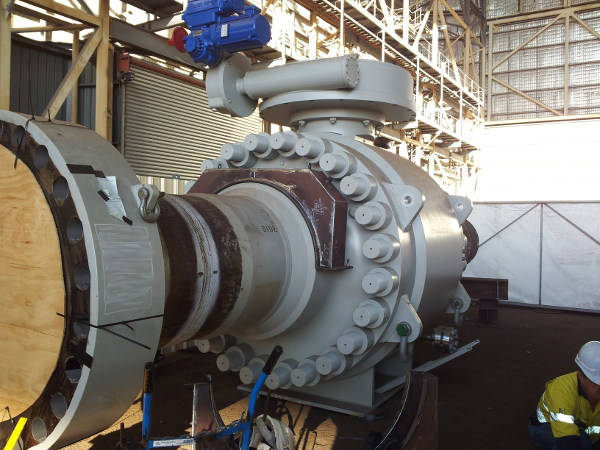WelderDestiny › Welding Engineering Tools › Calculating Hardenability of Steels
Calculating Hardenability of Steels
Calculating hardenability of steels is a common concern when welding steel, because we need to have an easy way to predict and express the hardenability of the steel. Typically, the harder the steel is once welded, the more brittle and susceptible to hydrogen assisted cold cracking it will be. The go-to method of doing this is to calculate the Carbon Equivalent (CE) of the steel.
The WelderDestiny Compass: Weekly e-zine Subscription
You can take a look at "The WelderDestiny Compass" back-issues by clicking here.
Before
we get down to the nuts and bolts of the calculation, let us first look at the
thinking behind what a carbon equivalent is. The idea is that the more carbon a
steel contains, the more easily it becomes hard due to phase transformations
brought on by thermal cycling.
So,
if we take, say, a 50mm diameter steel ball with 0.2% Carbon, and heat it to
say 900°C, and quench it in water, then we would expect it to be relatively
hard. If we took a similar steel ball, but with 0.4% Carbon content and subject
it to the same procedure, then the steel ball with the 0.4% Carbon will be
significantly harder than the ball with 0.2% Carbon. As Carbon is the most
common alloying element in steel that results in this hardening effect, it
makes sense to try to express this ability to harden in terms of the Carbon
content.
 Before welding this large bore gas pipeline valve, you would want to calculate the hardenability of the materials involved.
Before welding this large bore gas pipeline valve, you would want to calculate the hardenability of the materials involved.The
thing is that other common alloying elements also lead to this hardening
effect. Some to a lesser degree than Carbon, and some to a greater degree than
Carbon. Some clever people have then expressed the ability of different
alloying elements to harden steel as the equivalent if it was replaced by
Carbon. This is what a Carbon Equivalent formula is.
Carbon Equivalent Formulas for Calculating Hardenability of Steels
The
most common Carbon Equivalent (CE) formula used for calculating hardenability of steels is the following one:
This
formula works well for normal low alloy carbon steels, but for steels that use
micro-alloying, the following CE formula works better:
You
will notice that the second equation uses “Pcm” rather than CE. Apparently it
is short for “critical metal parameter”. At any rate, the idea is pretty much
the same as for the first CE formula. It is a way to compare different steels
in their propensity to harden. Please note that you cannot interchange the
results of the calculation from the two equations given above, when comparing
different steels.
There
are a number of different equations for calculating hardenability of steels, that provide similar information to the two
listed above, but it would not add much value to list them all here. As a
general rule, when standards or codes refer to a CE value, they will also
provide you with the relevant equation to use, to do the calculation. There is
therefore no great need to memorize these equations. Just understand their
intent and how to use them.
At
the risk of stating the obvious, the terms in the equations above mean:
- CE = Carbon Equivalent
- Pcm = Critical Metal Parameter (Just a different form of a CE.)
- %C = Percentage of Carbon in the material
- %Mn = Percentage of Manganese in the material
- %Cr = Percentage of Chromium in the material
- %Mo = Percentage of Molybdenum in the material
- %V = Percentage of Vanadium in the material
- %Cu = Percentage of Copper in the material
- %Ni = Percentage of Nickel in the material
- %Si = Percentage of Silicon in the material
- %B = Percentage of Boron in the material
There
are many carbon equivalent calculators available on the internet, so you can
certainly use one of those when you want to do the calculations. Please just
make sure that the equation they use is the correct one for your application.
I
have just set up a very simple spreadsheet to do these calculations, because
then I know exactly which equations have been used. You can certainly download
my Excel spreadsheet for doing these calculations by clicking here.
One
of the main reasons for calculating hardenability of steels, is to estimate how likely a
steel is to experience hydrogen cracking. To find out more about hydrogen
cracking during welding and how to prevent it, click
here.
WelderDestiny › Welding Engineering Tools › Calculating Hardenability of Steels
The WelderDestiny Compass: Weekly e-zine Subscription
You can take a look at "The WelderDestiny Compass" back-issues by clicking here.